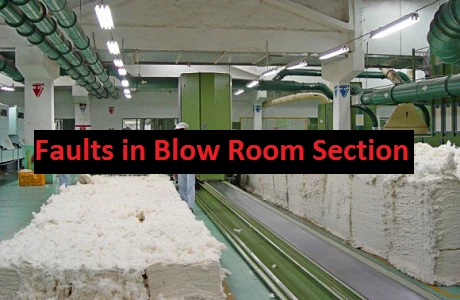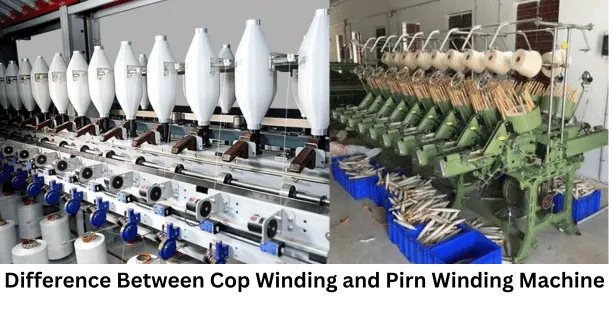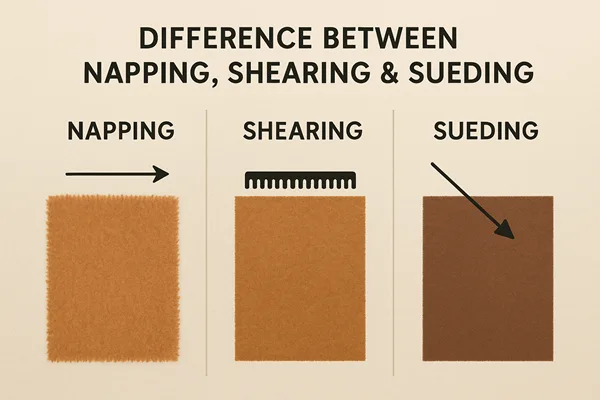Blow Room Process Faults, Causes & Remedies in Spinning Mill
Blow Room Process and Its Faults, Causes, and Remedies in Spinning Mills
The blow room is the first section of a spinning factory where opening, cleaning, blending, and dust removal processes are done. The quality of yarns totally depends on the performance of this section. As its importance, this article has presented a detailed discussion on those operations. This article presents the Blow Room Process and Its Faults, Causes, and Remedies in a Spinning Mill.
Basic Operations in Blow Room:
The main tasks of the blow room section are pointed out below:
- Opening,
- Cleaning,
- Mixing and blending,
- Dust removal.
All the above tasks have been explained in the following:
1. Opening:
It is the first task of the blow room section during yarn manufacturing. This process is carried out to the stage of flocks in the blow room and to the stage of individual fibres in the card. In blow room section, flock weight can be decreased to about 0.1mg.
2. Cleaning:
Cleaning is the second task of the blow room section, which is used in yarn manufacturing. A blowroom installation removes approximately 40-70% of the impurities. The total result is dependent on the machines, raw materials, and also on the environmental conditions. The cleaning effect cannot and should not be the same for all types of impurity levels since a lot of dirt can be removed more easily than a little. In order to clean, it is necessary to remove about as much fiber as foreign materials.
3. Mixing and blending:
It is the third task of the blow room section used in spinning. Fibres can be blended here at different stages of the process. These possibilities should always be exploited. In the case of blending, the start of the process plays an important role. Intensive blending in a suitable blending machine must be carried out after separate flock extraction from individual bales of layout. This type of blending operation must collect the sequentially arriving bunches of fibres from individual bales and mix them thoroughly.
4. Dust removal:
It is the final task of the blow room section used in spinning. Almost all the blow room machinery manufacturers now offer dust removing equipment or machine in addition to opening and cleaning. But it should be noted here that dust removal is not an easy operation since dust particles are completely enclosed in the flock and hence held back during suction.

Faults, Causes, and Remedies of Blow Room Process in Spinning Mill:
The blow room section plays an important role in the textile spinning sector. It is the starting of the spinning operation where fiber tufts are opened, cleaned for producing the required quality of yarn. During performing these operations several faults are produced in blow room which is deeply discussed in this article with their causes and remedies:
Faults in Blow Room:
Some common faults which are seen in the blow room section have been pointed out in below:
- Irregular lap,
- Licking lap,
- Soft lap,
- Uneven lap,
- Split lap,
- Barrel-shaped lap,
- Conical lap,
- Defective selvage.
All the above faults have been explained in the following with their causes and remedies:
1. Irregular lap:
Causes:
- It occurs due to the uneven feeding of fibers to feed lattice.
- Defective regulating motion, swing door, case.
- Incorrect maintenance of spinning machinery.
Remedies:
- Fault-free regulating motion should be used.
- Machine maintenance should be perfect.
2. Licking lap:
Causes:
- Improper pressure of calender roller.
- Too much fan speed.
- The lower opening of cotton.
- Incorrect roller motion setting.
Remedies:
- The necessary pressure of the calendar roller should be used.
- A proper roller motion setting should be used.
- The fan speed should be correct.
3. Soft lap:
Causes:
- The lower amount of relative humidity.
- Improper pressure of calender roller.
- Too much trash content of fiber.
Remedies:
- Relative humidity should be perfect.
- The proper pressure of the calendar roller should be applied.
4. Uneven lap:
Causes:
- Defective regulating motion.
- The uneven feed of material.
- Incorrect machine maintenance.
Remedies:
- Fault-free regulating motion should be used.
- Machine maintenance should be accurate.
5. Split lap:
Causes:
- The lower pressure of the calender roller.
- Variation of the surface speed of the top and bottom cage.
- The low temperature in the blow room section.
Remedies:
- Calendar roller pressure should be accurate.
- The required amount of temperature has to be used in the blow room.
6. Barrel-shaped lap:
Causes:
- Accumulation of dirt at both sides of the cage.
- Excessive fan speed.
Remedies:
- After a definite period of time, the cage must be cleaned.
- Fan speed must be controlled here.
7. Conical lap:
Causes:
- Improper airflow.
- Variation of pressure at both sides of the calender roller.
- More air Intel at one side.
- There is a dirt drain on one side of the cage.
Remedies:
- The pressure of the calendar roller has to be controlled.
- Proper airflow should be ensured here.
8. Defective selvage:
Causes:
- Broken gear teeth or machine parts.
- The faulty surface of the lattice.
- Faulty cage.
- Waste accumulation at the side of the machine.
Remedies:
- Accurate maintenance of lattice.
- Proper maintenance of the cage.



